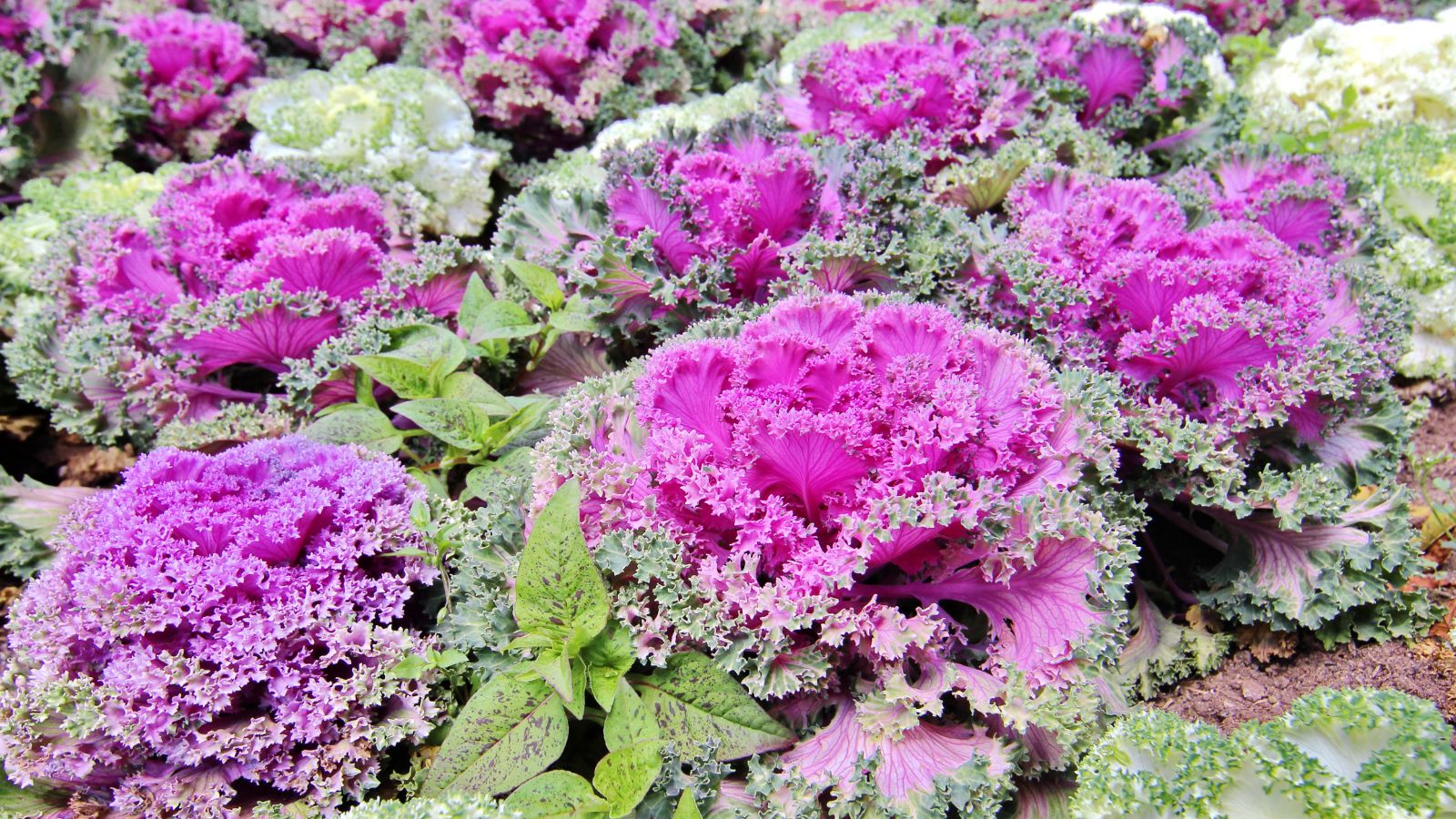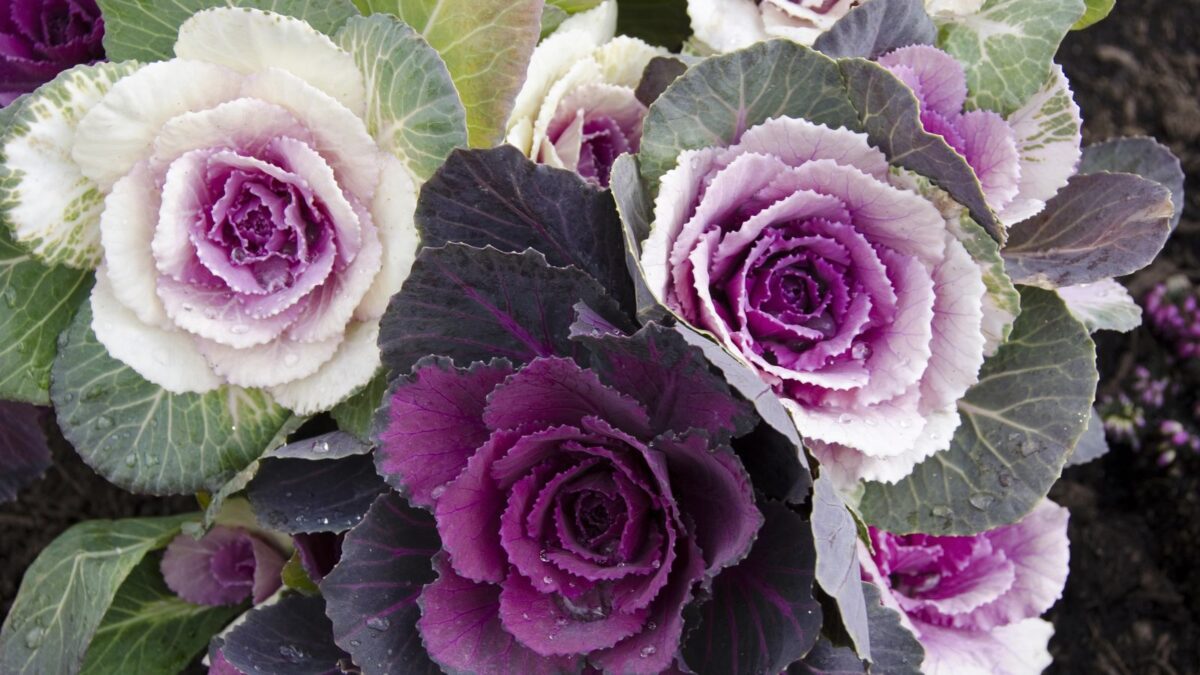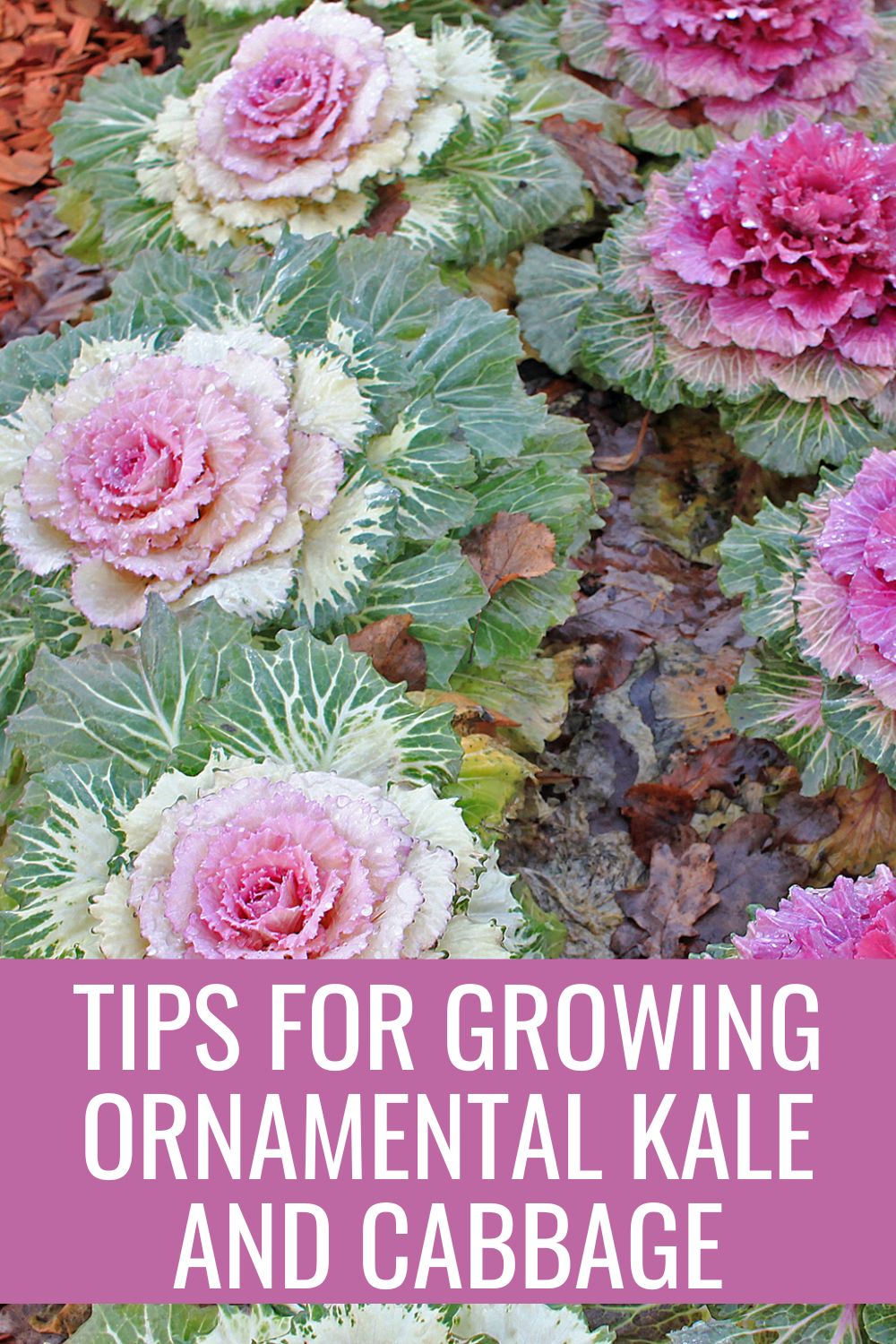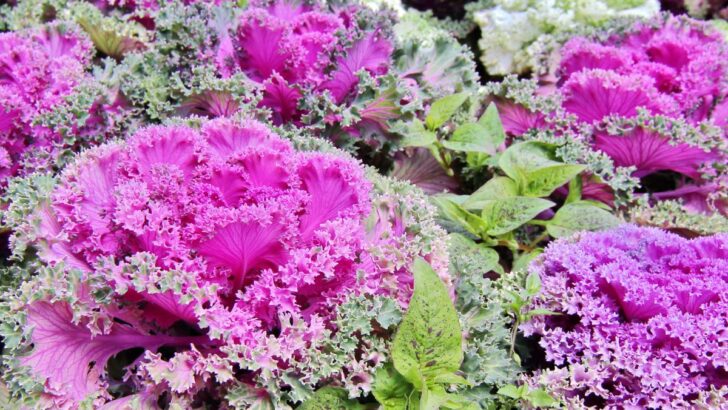What do you know about growing ornamental kale? Most everyone knows cabbage as the main ingredient in coleslaw. However, some colorful cabbages and kales are grown just for decoration. Often called ornamental kale or flowering kale, these are great to add a pop of fall color to the landscape.

Grow Ornamental Kale And Cabbage For Fall Color
Edible cabbage is one of the most widely grown leafy vegetables. Along with its close relative, kale, cabbage is a cool-season crop, sown in spring for fall and winter harvest. It is a staple food in many European countries and the principal ingredient of two well-known foods; coleslaw and sauerkraut. But you can also grow cabbage and kale for reasons other than eating, such as adding ornamental kale and cabbages to your landscaping.
These ornamental plants are grown only for decoration and not for eating. They are technically edible. However, they have a somewhat bitter flavor, so most people don’t think they taste all that great. Even so, they can be used as a colorful garnish for salads, appetizer trays, or other dishes. They do well in cool weather and can often be found in local garden centers.
Ornamental cabbage and kale belong to the Acephala group of the species Brassica oleracea, a member of the mustard family originally native to Southern and Western Europe.
Head cabbage, broccoli, cauliflower, and Brussels sprouts are also members of the species but are in different groups. These are all cultivated plants with horticultural origins and are not found in the wild. The ornamental kales and cabbages have been hybridized for their colors and shapes at the expense of flavor.
Ornamental kale has been created to be a hardy plant that likes rich soil, has ruffled leaves of varying colors, and can grow from 12 to 24 inches tall on average.
Ornamental kale varieties

There are several varieties of ornamental cabbage and kale, which can be roughly divided into two groups:
- Those with smaller leaves with smooth, wavy edges
- Those with larger leaves and heavily fringed, lacey edges
In both types, the outer leaves are always green or bluish-green. The central rosette is either white or cream or shades of violet, pink, or reddish purple. There is a newer F1 hybrid called ‘peacock’ with long, narrow, deeply cut leaves, which gives the plant a snowflake-like appearance. All varieties are designed to do well in cooler temperatures, and you will often see them planted from seed or placed as small heads at the start of fall.
Here are just a few of these ornamental kale varieties:
- Redbor kale
- Peacock kale
- Nero di Toscana (also known as Tuscan or Black cabbage)
- Red Russian kale
- White Russian kale
- Purple Vienna kale
- Blue Scotch kale
- Dwarf Blue Curled kale
- Kalettes (a hybrid of kale and Brussels sprouts)
How to Grow Ornamental Kale And Cabbage
Ornamental cabbage and kale are annual plants grown from seed sown in late spring. They are outstanding for fall and winter colors and can be used in many ways around the landscape. When used as bedding plants, the leaf shapes and color combinations provide an interesting palette for unusual designs. They can also be used for borders and hedges or to mark paths within the garden or landscape. If you love privacy hedges, look at these 15 evergreen plants that are perfect for hedges.
Ornamental kale plants are ideal for pots, tubs, and window boxes, either in a mixture of the varieties or planted with fall-blooming plants such as chrysanthemums. One effective method is to plant the different colors and varieties too tight together in concentric circles or in other geometric patterns in a large shallow bowl or tub. This gives a really beautiful effect once they are fully grown.
Ornamental kale is also great as a border plant.
Growing ornamental kale from seed is easy
You can get ornamental kale seeds from your local garden center, Walmart, Lowes, or Home Depot, or, if you’d rather get them delivered to your door, get them from Amazon.
Sow seeds outdoors in late spring or early summer in trays, seedbeds, or uncovered frames, and cover them lightly. They’ll germinate in 2 to 3 weeks at a temperature of 60-65F. Move the seedlings to individual pots as soon as they are large enough to handle.
Plant them so the cotyledons (seed leaves) are at the soil level. Keep them in a sunny but cool location. The soil should be rich and well drained; add some extra organic matter, such as compost or leaf mold, to regular potting soil.
Ornamental kale and cabbage need plenty of water and weekly feeding with dilute liquid fertilizer. They will grow rapidly and should be potted into larger pots (or their final location, if desired) as necessary. They can then be planted in the garden or tubs anytime during the growing season.
Stop fertilizing as the temperature starts to drop in late summer/early fall. The leaves will then begin to color up when the night temperatures drop to 50 F or below. The milder the climate, the longer they’ll continue to provide color.
Discard the plants when they begin to “bolt” (flower) later in the winter or spring. You can let them flour and collect seeds if you wish, but buying fresh seeds each year is better.
Ornamental Kale and Cabbage Pests and Diseases
But what about diseases or pests? Ornamental cabbage and kale are subject to numerous problems from insects and diseases, and you need to be aware of this before choosing to plant them.
Look for “ chewers,” particularly cabbage loopers and cabbage worms. These will leave unsightly holes in the leaves (or no leaves if the infestation is terrible!) Which will spoil the plants’ appearance. Take them off by hand and use an insecticide.
Root maggots may infect seedbeds; they are less of a problem on plants in pots later on. Plants will look wilted and begin to decline. Water with an insecticide.
The club root fungus can be a severe problem in garden beds, primarily where other cruciferous plants have been grown. As with root maggots, when the roots are attacked, the plant will look wilted and may even die.
Your nurseryman can also recommend a special fungicide to water in, but this may not help in advanced cases. Destroy the plants, remove the infected soil, and wait several years before planting cabbages or their relatives in that spot again. Reducing the acidity of the soil by adding lime also helps.
FAQs
Does decorative kale come back every year?
No. They are annuals and will not grow back next season.
How long will ornamental kale last?
It can last through November and December in most areas, sometimes even into early January. They can survive temps as low as 5 degrees Fahrenheit.
What’s the best way to grow ornamental kale?
You can start from seed or small starter plants purchased from a nursery.





10 Simple Front Yard Landscaping Ideas
Tuesday 17th of January 2023
[…] Growing ornamental kale on a border next to your driveway is easy and beautiful! […]